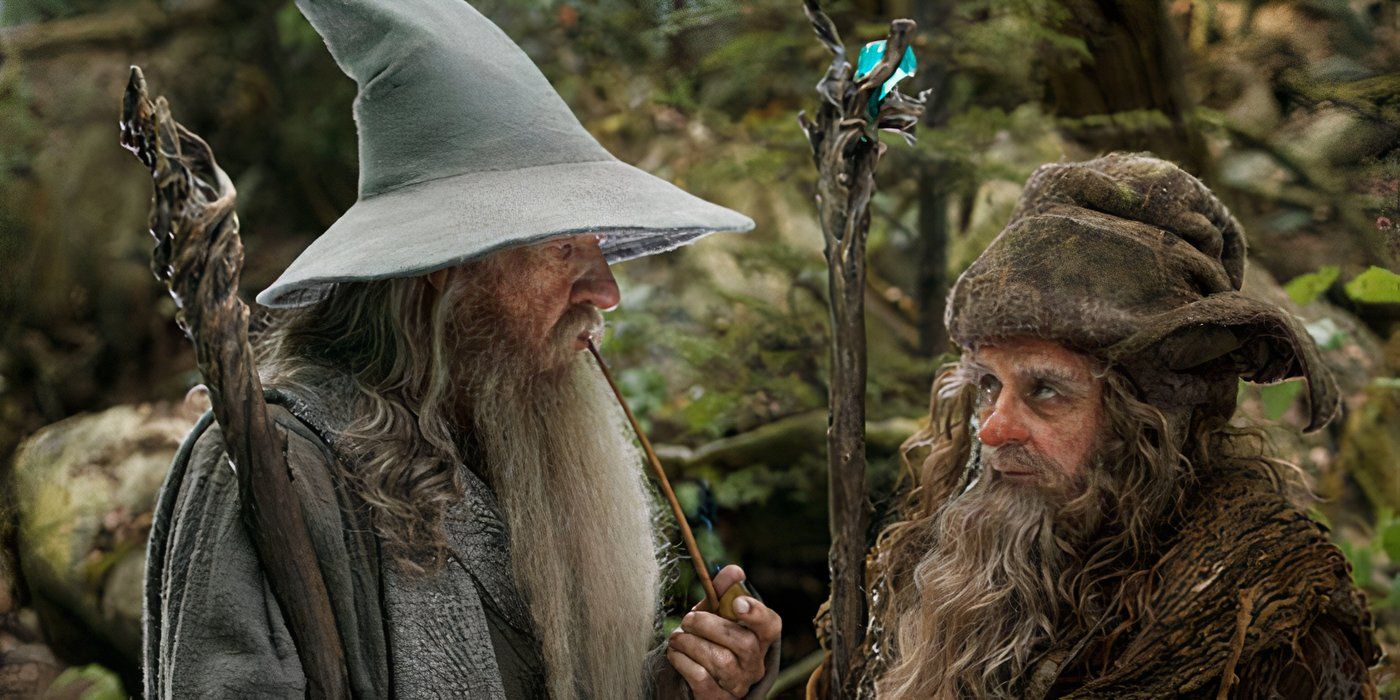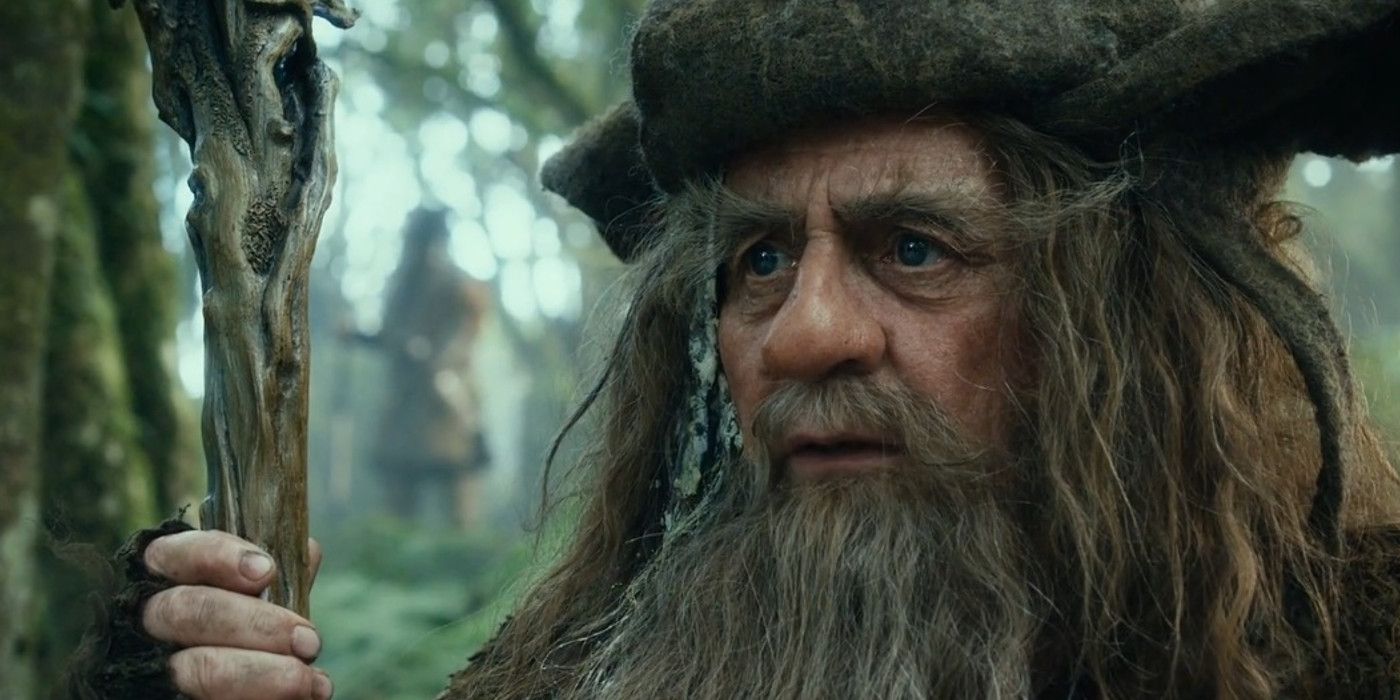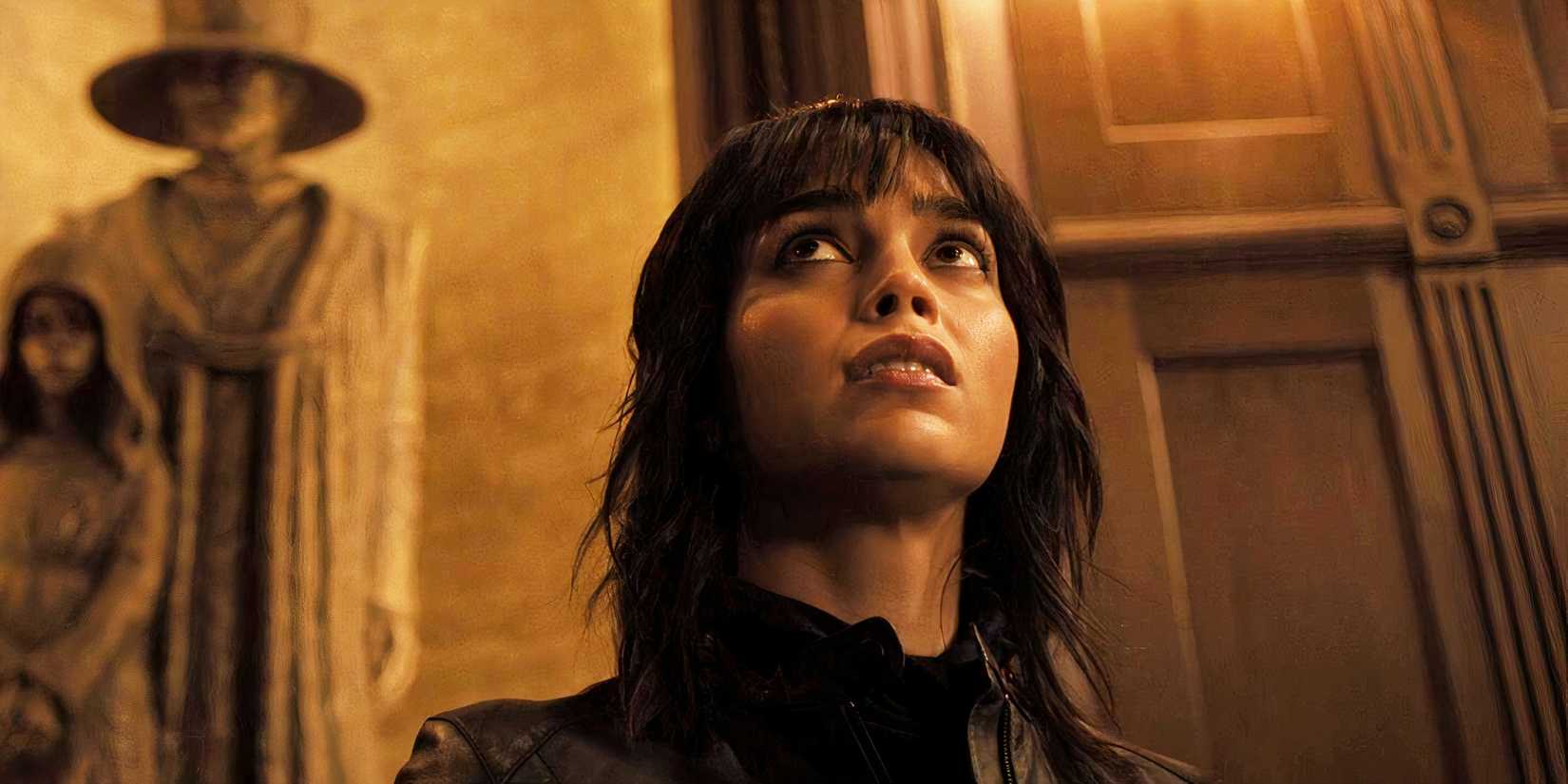Peter Jackson’s The Hobbit film trilogy was never as well-received as his first foray into Middle-earth with The Lord of the Rings (although neither have gotten the same vitriol as Amazon’s billion-dollar boondoggle The Rings of Power). Personally, although I saw every Lord of the Rings movie in the theaters almost immediately upon release, I only watched the first Hobbit film on the big screen; the dozens of changes made to The Hobbit left a bad taste in my mouth at the time.
Yet having rewatched all of The Hobbit and The Lord of the Rings films recently, I have to admit that the later films do actually have their charms, and that The Hobbit films did get some things right. One of the most endearing changes in the entire trilogy – and one actually I didn’t like on my first viewing – is the addition of Middle-earth’s sloppiest, most guano-encrusted wizard, Radagast the Brown.
Of All The Hobbit Movie Changes, Adding Radagast’s Character Was One Of The Best
A Good-Natured, Entertaining Addition To The Hobbit
Plenty of the changes Peter Jackson and company made to The Hobbit were confusing, or even downright off-putting to both longtime fans of the story and new viewers alike. Yet one area Jackson’s Hobbit trilogy most succeeded in, in part thanks to his and his team’s fantastic approach to casting, was the introduction of Radagast the Brown, one of Gandalf’s fellow Istari. Played by long-time Scottish character actor Sylvester McCoy, best known for his time as Doctor Who‘s Seventh Doctor, Radagast’s good-natured bumbling and poor personal hygiene make him an entertaining addition to The Hobbit.
Unlike the addition of an entirely-new elf Tauriel, or the increased focus on ancillary characters like the Master of Lake-Town, both of whom work in the films’ narrative by complicating the existing story, Radagast’s appearance in The Hobbit films is in support of the subplot of the White Council confronting the Necromancer in Dol Guldur. That section of the films is a great extrapolation of events that only warranted a few lines of text in the original book, as well as some of the supplemental information in the Appendices of The Lord of the Rings.
Including Radagast Gave LOTR Movie Fans A Chance To See More Of The Istari
The Brown Wizard’s Removal From The Lord Of The Rings Was A Disappointment
While Peter Jackson’s first trilogy was generally praised for its editorial approach, as most of the changes made to Lord of the Rings either expanded the story or condensed it in order to help the films’ pacing, one change that initially caused some strife among fans was the removal of Radagast. In the book version of The Fellowship of the Ring, Gandalf encounters Radagast on his way to Bree, and is warned that the Nazgûl are abroad; it’s Radagast’s suggestion that Gandalf consult Saruman that gets Gandalf imprisoned atop the tower of Orthanc.
Radagast’s removal from the LOTR films wasn’t a bad decision in and of itself, as the Brown Wizard’s presence didn’t move the plot along any faster, but it did result in those films giving the impression that Gandalf and Saruman were the only representatives of their order in all of Middle-earth. Neither Radagast nor either of the Blue Wizards is mentioned in Jackson’s films, and although those movies breathed so much wonderful, sweeping life into their world, the wizards’ utter absence is a bitter disappointment.
Radagast’s Story In The Hobbit Explained Where The Rest Of Gandalf & Saruman’s Order Was
Radagast Was Too Distracted
Perhaps the most important outcome of Radagast’s appearance in The Hobbit is that it gives a bit of context as to where Radagast is during the War of the Ring – namely, that he was likely too distracted to have noticed anything was wrong. Radagast only became aware of the issues in the Mirkwood because of the spiders who tried to attack his home; since the War of the Ring saw no similar threats emerge in that area, Radagast may well have spent the entirety of T. A. 3018 completely oblivious as to how close Middle-earth came to doom.
Like his fellow Istari, he was merely a guide for the people of Middle-earth in their fight against Sauron.
Radagast was never meant to be a grand hero in The Hobbit or The Lord of the Rings; like his fellow Istari, he was merely a guide for the people of Middle-earth in their fight against Sauron. There wouldn’t have been much he could have contributed to the War of the Ring, as his strengths lay in understanding the plants and beasts of the world – which isn’t exactly something Frodo and Sam could have made much use of on their long trek to Mordor.







